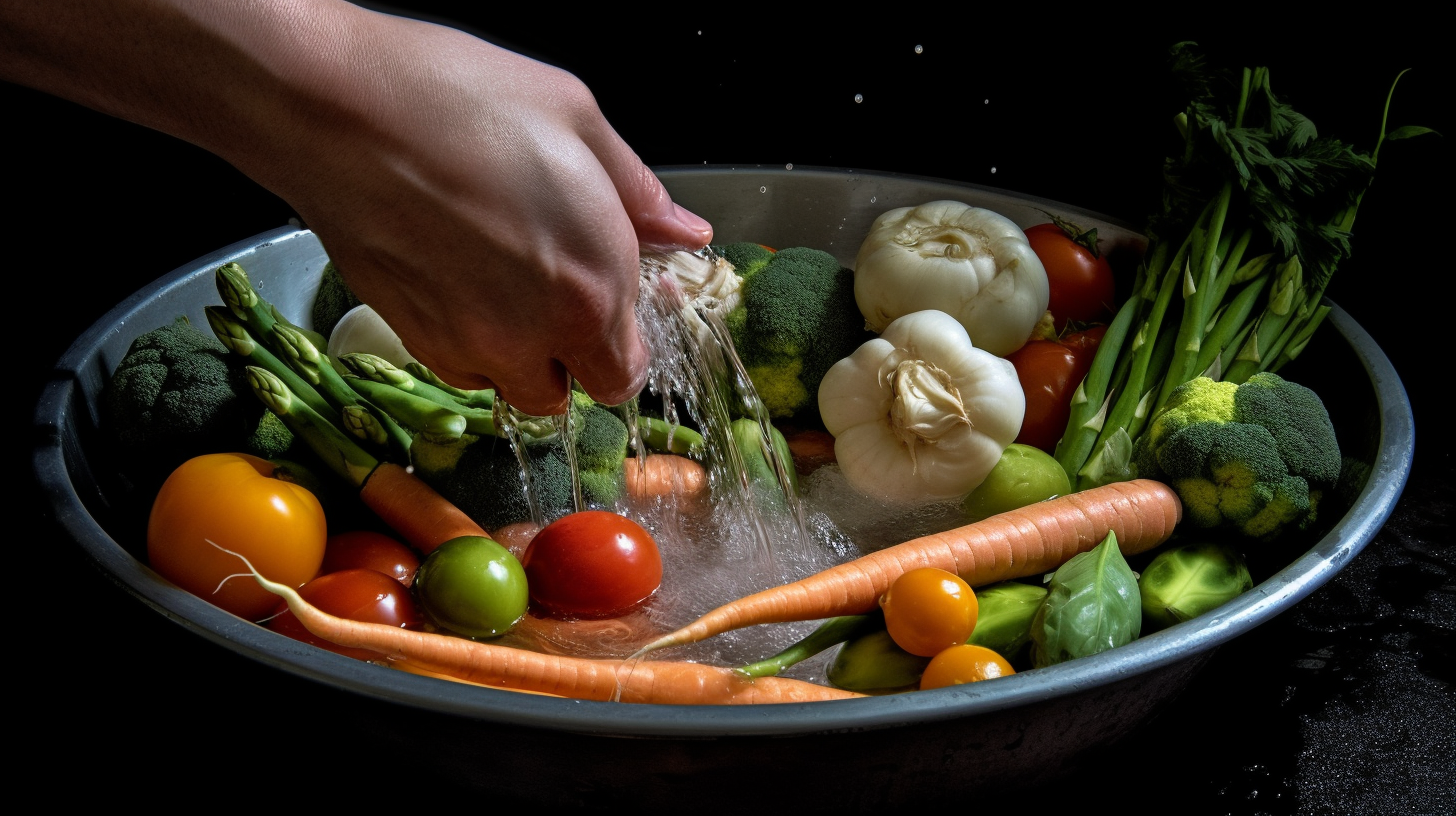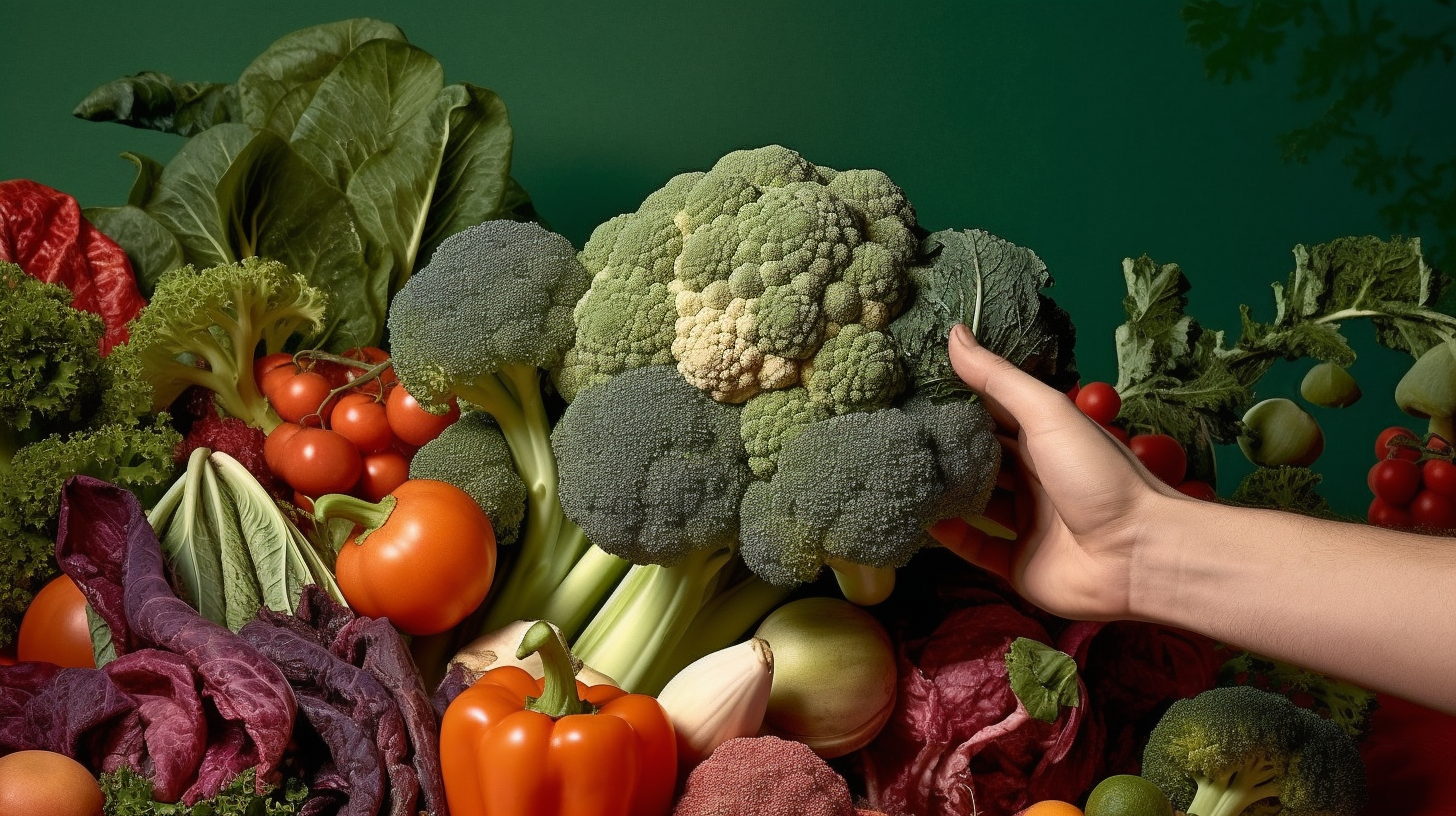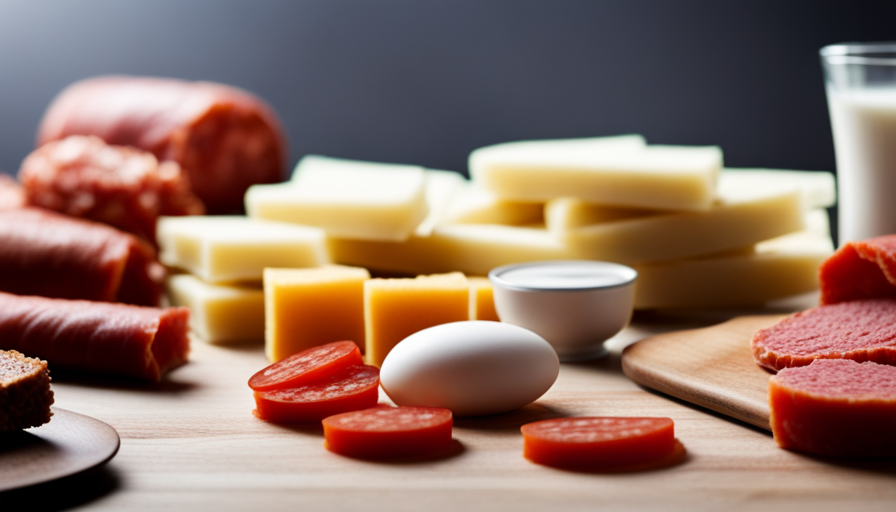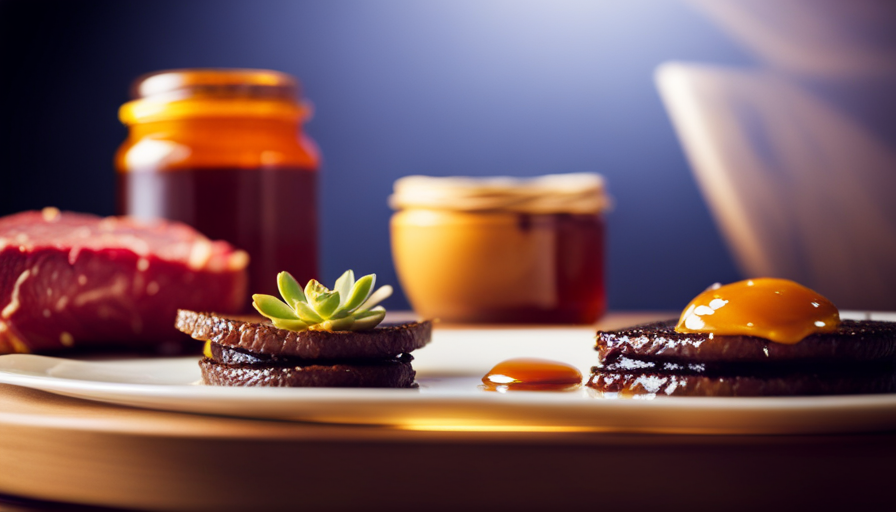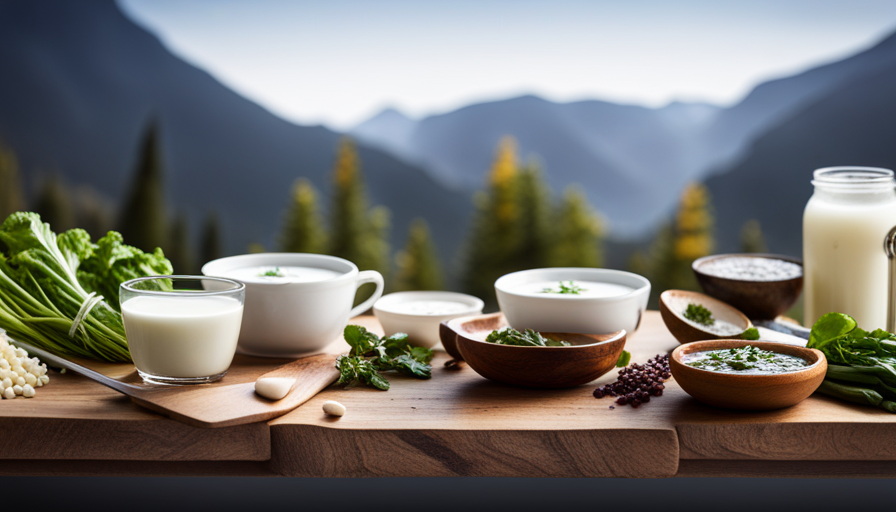How To Clean Vegetables To Eat Raw
As a specialist in food safety and nutrition, I understand the importance of properly washing vegetables that are meant to be eaten raw. This step is crucial not only for removing harmful bacteria from your produce but also for maintaining their nutritional value.
In this article, I’ll be discussing how to clean vegetables to eat raw in an effective manner so you can enjoy them safely! Raw veggies are packed with essential vitamins and minerals, making them a great addition to any diet. However, their dirty surfaces must first be thoroughly cleaned in order to prevent any potential contamination.
By following these simple steps, you can make sure they’re as safe as possible before consuming them. Read on to find out more information about how to cleanse your fresh produce like a pro!
Selecting Quality Produce
Buying the best vegetables for eating raw requires a keen eye and knowledge of what’s in season.
When shopping, look for produce that is firm to the touch, with no signs of bruising or discoloration. Be sure to avoid any produce that appears slimy or has an off-putting odor as these are indicators they may not be fresh.

Seasonal availability also plays a big role when selecting quality veggies; you’ll get the most flavor out of your meal if you purchase produce during its peak ripeness!
To ensure maximum nutritional benefits, it’s important to transition from selecting top-notch products to prepping them correctly.
Soaking And Scrubbing
Soaking and scrubbing vegetables is a crucial step in preparing them for eating raw.
Before you begin, make sure to wash your hands thoroughly with soap and water or use an alcohol-based hand sanitizer.
Then, fill a bowl or sink with cold water and add 1 tablespoon of salt per gallon of water. This helps reduce the risk of bacterial contamination.
Submerge the vegetables into this pre soak solution for at least 10 minutes before cleaning them.

The next steps involve scrubbing the produce vigorously under running cold tap water using a brush that is designated exclusively for food preparation.
Make sure to focus on any crevices where dirt may be stuck as well as dark spots where bacteria can accumulate.
Afterward, take a few paper towels or a clean cloth to dry off the vegetables carefully, taking care not to cross contaminate other surfaces while drying.
Using multiple layers of clean paper towels can also help absorb excess moisture from the washed produce.
Once you have finished scrubbing and drying the vegetables, it’s time to move onto sanitizing them with vinegar – an ingredient known for its antibacterial properties!
Sanitizing With Vinegar
Now that your vegetables are scrubbed and soaked, it’s time to sanitize them with vinegar. Vinegar is a great choice for killing harmful bacteria while preserving the nutrients of the vegetable.
Here are three reasons why you should choose vinegar as your go-to sanitizer:
- Eating safely – By using vinegar on your veggies before eating raw, you can reduce the risk of foodborne illness from consuming produce contaminated by microorganisms.
- Economical – Not only does this method work effectively at eliminating these contaminants, but it’s also inexpensive compared to other cleaning agents available in stores.
- Vinegar alternatives – If you don’t have access to distilled white vinegar, there are several other types of acid-based liquids such as apple cider or red wine vinegars that will do just as well in ensuring food safety when used appropriately.
With proper care and precautionary steps taken during the preparation process, you can ensure that your vegetables remain safe and tasty to eat raw!
To take things one step further in protecting yourself against any potential contamination on your veggies, let’s look into treating them with baking soda next…
Treating With Baking Soda
When preparing vegetables for eating raw, baking soda is an effective tool.
Baking soda can be used to create a mineral bath that helps reduce bacteria and other contaminants on the surface of vegetables.
To do this, dissolve two teaspoons of baking soda in one quart of cold water and soak vegetables in it for five minutes before rinsing them off with cool tap water.
After soaking, use drying methods such as patting with paper towels or air-drying to remove excess moisture from the vegetable surfaces.
Another method using baking soda is scrubbing the outside surfaces of vegetables directly with a mixture of 1 teaspoon of baking soda dissolved in 1 cup of warm water.
This technique should only be used on hard-skinned fruits and vegetables such as cucumbers and apples.
After scrubbing, rinse again with cool tap water and dry thoroughly.
The effectiveness of a baking soda solution in reducing bacterial contamination depends heavily on proper cleaning techniques followed by thorough rinsing and drying steps afterwards.
It’s important to note that these treatments are not intended to replace washing produce under running water prior to consumption but rather enhance its cleanliness after washing has been done properly.
With this added step in mind, you’re now ready to move onto the next stage: treating your veggies with salt!
Cleaning With Salt
Cleaning vegetables to eat raw is an important part of food safety and nutrition. It’s essential to rinse vegetables before eating them, as dirt and debris from the produce can contain harmful bacteria.
I recommend washing with salt for extra protection against germs and contaminants.
When using salt for cleaning vegetables, it’s best to use either cold or lukewarm water so that you don’t damage delicate produce like mushrooms, leafy greens, and berries. Start by peeling any thick-skinned fruits or vegetables prior to soaking in a bowl filled with salted water. Peel off layers until all traces of dirt are gone; this method works well when dealing with root crops such as carrots or potatoes.
Afterward, be sure to dry your veggies thoroughly using paper towels or air drying techniques such as straining over a colander or patting gently on absorbent cloths.
Lastly, always remember to give each vegetable a good scrubbing under running water after rinsing with salt – even if there isn’t visible soil present! This step will help remove any remaining residue while adding another layer of protection against potential contamination.
Moving forward, let’s look at how hot water can play a role in making sure our fresh produce is safe for consumption.
Using Hot Water
The previous section highlighted the importance of salt as an effective way to clean vegetables when eating them raw. To take it one step further, using hot water is also a viable option for those looking to add another layer of protection before consuming their vegetables. It’s time for us food safety and nutrition experts to drop some knowledge about this overlooked method of cleaning produce!
First things first – boiling temperatures are not necessary nor recommended. Instead, steam blanching your veggies in hot water (not hotter than 120°F) will help kill pathogens on contact while still preserving nutrients and flavor.
This simple process can be done in minutes with just a pot or container filled with enough water to cover the vegetable you plan on steaming. Allow the veggie to sit in the water for 3-5 minutes until tender and then allow it cool completely before handling or consuming.
On top of being fast and easy, adding hot water into the mix helps reduce any potential bacteria that may have been missed during your initial salt soak. That said, you don’t need to use both methods at once; though if you choose either one over the other, make sure you’re doing so safely by following all guidelines provided here today!
Now let’s move onto washing with lemon juice – another great way to ensure your veggies are safe and ready for consumption!
Washing With Lemon Juice
I’m a big fan of using lemon juice to wash vegetables before eating them raw, as it has several beneficial properties to help keep them clean and safe for consumption.
I recommend making a diluted solution of one part lemon juice to two parts water, then soaking the vegetables for a few minutes before thoroughly rinsing them off.
Additionally, it’s best to store vegetables in the refrigerator immediately after washing to maintain their optimum freshness.
Lemon juice is a great way to ensure your vegetables are safe and healthy to eat!
Benefits Of Lemon Juice
When it comes to juicing techniques, lemon juice is a great way to naturally clean veggies. It contains cleansing properties that help remove dirt and bacteria from the surface of fruits and vegetables. Plus, its acidic nature helps break down any wax or residue that may be present on produce.
Not only does this make your food safer to eat raw, but there are also some health benefits associated with washing vegetables in lemon juice! The acidity of the lemon juice can kill off harmful microorganisms like E. Coli and Salmonella which can cause food poisoning if consumed uncooked. Additionally, because of its natural citric acid content, lemon juice has antioxidant properties that can help protect against cell damage caused by free radicals and other environmental toxins.
Furthermore, using lemon juice as part of a regular cleaning routine for fresh produce may even reduce the risk of pesticide contamination due to its antimicrobial activity. So next time you’re looking for an easy way to ensure your veggies are safe to eat raw, consider giving them a quick rinse with some freshly squeezed lemon juice – not only will it give them a delicious citrusy flavor boost but it could also provide beneficial nutrients too!
Washing Techniques
When it comes to storing produce safely, drying techniques are just as important as washing. Drying removes any excess moisture that may have remained after washing and helps keep fruits and vegetables fresher for longer.
This can be done with either a paper towel or clean dishcloth, but make sure the cloth is free of dirt and bacteria before use! Additionally, you should store washed items in an airtight container so they don’t become exposed to mold or other contaminants in your fridge.
The best way to dry fruit and veggies is by patting them down gently with a towel – this ensures that all water droplets are removed without damaging delicate skins or bruising more fragile items like berries. Once dried off completely, you can then place them in their designated storage containers for safekeeping until ready for consumption.
Finally, when dealing with fresh produce, always remember to wash thoroughly with lemon juice beforehand – this will help remove harmful microbes from the surface while also providing antioxidant protection against cell damage caused by environmental toxins.
With these simple steps taken care of, you’ll be able to enjoy delicious home-grown produce for weeks and months ahead!
Storage Advice
When it comes to sourcing locally and buying organic produce, there are a few things you should keep in mind.
Firstly, make sure that the fruits and vegetables have been grown according to natural standards – this will ensure that they’re free from pesticides and other harmful chemicals.
Secondly, if you can find the same items at your local farmers market or grocery store, then go for those – as this is likely to be fresher than anything else!
Finally, once you’ve washed them with lemon juice and dried off any excess moisture, proper storage is essential for extending shelf life.
Store your fresh produce in airtight containers away from any sources of heat or light exposure.
This way, you’ll help preserve their nutritional value while also keeping them safe from unwanted bacteria and microbes.
Removing Wax And Pesticides
When dealing with vegetables that are meant to be eaten raw, it is important to ensure they are cleaned properly. This means removing any wax or pesticides that may have been applied to them during the growing process.
Peeling techniques can help remove some of this residue, but chemical treatments may also be required depending on the type and amount of wax present. If you choose to use a chemical treatment for your fruits and vegetables, make sure you follow all safety instructions carefully.
Generally speaking, soaking in cold water should suffice; however, stronger solutions might need to be used if there is an especially high concentration of wax or pesticide residue present. Also remember to rinse off any soap or solution after cleaning before consuming.
Once any residues from waxes and pesticides have been removed, you will want to address any remaining organic matter as well. With proper cleaning procedures, you can enjoy fresh produce without worry or concern about potential contaminants!
Removing Residue From Organic Produce
Moving from removing wax and pesticides to residue on organic produce, we need to be extra cautious when handling our food. After all, the last thing we want is for any of these contaminants or residues getting into our bodies!

To make sure that doesn’t happen, let’s talk about a few pre-washing tips and drying techniques for cleaning vegetables before eating them raw.
A figure of speech comes in handy here: think of your fresh veggies as jewels – you wouldn’t take off a necklace without washing it first right? Well, the same goes for those precious gems coming out of the ground; wash them with cold water before taking a bite!
Here are some simple steps you can follow while preparing your veggies:
- Rinse under running water just before eating.
- Soak in cold water mixed with a mild fruit/vegetable wash if they’re heavily contaminated.
- Scrub away dirt using a soft brush (not metal).
- Dry thoroughly with paper towels or cloths.
It’s also important to note that certain fruits and veggies absorb more water than others – like mushrooms and eggplants – so pay attention to their texture after washing them and adjust accordingly.
When stored properly following these guidelines, you can trust that the produce won’t go bad anytime soon!
With that said, let’s move on to how best store our foods…
Storing Properly
Properly storing raw vegetables is a key step in ensuring they are safe to eat. To avoid contamination and spoilage, it’s important that proper packaging is used when storing them.
Pre-packaged vegetable mixes should be refrigerated or kept on ice while leafy greens can be wrapped loosely in paper towels and placed in plastic bags with air circulation. It’s also a good idea to store fruits and vegetables separately so the ethylene gas produced by ripening fruit doesn’t speed up the deterioration of other items.
When selecting fresh produce for eating raw, you want to make sure it meets quality standards for texture, flavor, color and smell. Choose vegetables that look firm and vibrant in color; if there is discoloration or bruising this could indicate damage from pests or improper handling during harvesting.
Smell your vegetables too before consuming – any unpleasant odors may mean bacteria have begun growing on the food which makes it unsafe to eat.
Tasting freshness is another way to evaluate whether a vegetable is fit for consumption without cooking. If a vegetable tastes bitter, sour or overripe then throw it away as these flavors indicate spoilage has occurred. However, if the taste is mild but flavorful then you know you have picked out a prime selection of veggies!
Tasting For Quality
When it comes to ensuring the quality of raw vegetables, nothing compares to a good tasting. This isn’t just about enjoying their flavor profiles; it’s also an important way to check that they are safe and nutritious for consumption. The art of tasting for quality is something that any food safety and nutrition expert should have in their arsenal of knowledge.
Tasting techniques come in many forms and can be used both before and after cleaning your vegetables. Before you clean them, taste a small piece to get an idea of the vegetable’s natural flavor profile. This helps you determine which tastes need to be removed during the cleaning process, like dirt or sand.
After cleaning, take another sample bite to make sure all foreign substances have been eliminated from its taste as well as texture.
These simple yet effective methods will help ensure that whatever you eat is up to standards when it comes down to safety and quality. As long as you follow these steps carefully every time, there’s no reason why you won’t find yourself with delicious and healthy raw vegetables ready for eating soon! With this in mind, let’s move on now to avoiding cross-contamination when handling fresh produce.
Avoiding Cross-Contamination
It’s very important to wash your hands before and after handling any raw vegetables.
Separate cutting boards should also be used for raw vegetables and cooked foods to avoid cross-contamination.
Make sure to use hot, soapy water to thoroughly clean your cutting boards in between uses.
Finally, always make sure to store raw vegetables in the fridge or freezer to keep them fresh.
Wash Hands
It’s important to take proper cleanliness protocols seriously when handling raw vegetables.
One of the most important steps is making sure your hands are always washed properly before and after preparing food.
A good habit to get into is washing your hands with warm soapy water for at least 20 seconds—the time it takes to sing ‘Happy Birthday’ twice—before and after handling any type of fresh produce or ingredients.
Not only will this help remove dirt, bacteria, and other contaminants from your skin, but also ensure that you don’t spread germs onto whatever you’re cooking!
Make sure to scrub between fingers and under fingernails too; these spots can easily harbor unwanted microorganisms.
Finally, make sure you dry your hands completely with a paper towel or air-dry them afterwards.
Doing all of this will guarantee that you have taken all necessary precautions in avoiding cross-contamination while prepping your delicious veggies!
Separate Cutting Boards
It’s also important to use separate cutting boards for each type of food when preparing vegetables.
This is because different ingredients can have differing levels of cleanliness and sanitation, which could easily lead to cross-contamination if you don’t take proper precautions.
So make sure you invest in a few plastic or wood cutting boards that are designated for specific ingredients—like one board just for meats, another just for produce, etc.—in order to reduce the risk of illness caused by bacterial contamination.
Not only will this help keep your meals safe and healthy, but it’ll also help reduce waste since you won’t need to constantly replace contaminated boards with new ones.
Plus, it’s always a good idea to designate a colored cutting board specifically for raw meat so as not to confuse it with other types of ingredients during preparation!
By following these guidelines and taking safety seriously while handling all your fresh veggies, you can ensure that everyone at the dinner table will be able enjoy their meal safely and happily.
Blanching For Safety
Now that we’ve discussed how to avoid cross-contamination when cleaning vegetables for raw consumption, let’s move on to blanching for safety.
Blanching is the process of submerging vegetables in boiling water for a short period of time and then immediately transferring them into cold or iced water. This method helps kill any potential harmful bacteria present on the food surface as well as preserve color and texture.
Cooking times vary depending on the type of vegetable being cleaned but it should generally be around 1-3 minutes at a temperature of 190–210°F (88–99°C). It’s important not to overcook vegetables during this process as they may become too soft and lose their nutritional value.
After blanching, thoroughly rinse off all vegetables with fresh running water before drying them off completely with a clean towel. By following these steps, you can ensure your veggies are safe to eat without having to cook them first!
As always, keeping track of expiration dates is key for maintaining food safety and proper nutrition practices.
Keeping Track Of Expiration Dates
It is essential to be aware of expiration dates when it comes to cleaning vegetables for consumption. As a food safety and nutrition expert, I cannot stress enough the importance of understanding labeling guidelines, safe handling practices, and proper storage temperatures in order to keep your produce fresh and ready-to-eat.
To ensure that you are consuming only the freshest ingredients:
- Read all labels carefully on the packaging or container
- Check the date codes stamped onto the product
- Pay attention to sell by/use by instructions given at point of purchase
By following these easy steps, you can rest assured knowing that you have taken full precautionary measures in protecting yourself against any potential foodborne illnesses while also ensuring maximum flavor and nutrition from your raw vegetables.
With this knowledge firmly secured in mind, we can now move on to checking for insect damage.
Checking For Insect Damage
After ensuring that all food items are kept at the proper temperature and have not passed their expiration dates, it is important to inspect them for any insect damage. This will help prevent any potential illness from ingesting contaminated foods.
When checking for insect damage on vegetables, start by inspecting the stems or roots of the vegetable – this can be an easier way to detect bug infestation than examining the entire surface area. Be sure to check underneath leaves too, as larvae may hide in these areas. Additionally, if there are holes in the vegetable itself, you should discard it as this could indicate a high probability of bug contamination.
Finally, once you’ve thoroughly inspected your vegetables and they appear free of insects and other contaminants, you can now safely prepare them for eating raw!
It’s best practice to wash all fruits and vegetables before consuming them; use cold running water and take care not to soak delicate produce like berries or mushrooms. And remember – if anything looks off while washing or preparing your veggies (odd coloration, slimy texture) then don’t eat them!
Keeping yourself safe from foodborne illnesses starts with taking precautions when selecting and handling ingredients – so always keep safety top of mind when cooking up delicious meals!
Frequently Asked Questions
How Long Should I Soak Vegetables Before Scrubbing Them?
Soaking vegetables before scrubbing them is a great way to sanitize and remove dirt from the surface of produce.
Generally, it’s recommended to soak fruits or veggies in a bowl filled with cold water for 5-10 minutes, depending on their size.
Afterwards, use a vegetable brush and plenty of cold running water to gently scrub away any remaining residue.
As an extra precaution for eating raw vegetables, you should also rinse them with distilled white vinegar after soaking.
This will help reduce germs even further by killing off bacteria that may remain on the surface.
How Often Should I Sanitize Vegetables With Vinegar?
Soaking vegetables before consuming them is an important step, but it isn’t always enough to ensure they’re sanitary.
To keep your veggies as safe and healthy as possible for eating raw, you should also give them a vinegar bath once in a while.
Like a knight in shining armor protecting the castle walls from invaders, pre-soaking and heat treating with hot water or steam can help protect against bacteria – but don’t forget the added layer of protection that white distilled vinegar brings!
Make sure to incorporate this additional safeguard into your routine when cleaning vegetables to eat raw; doing so will mean peace of mind that your food is properly sanitized.
Is It Safe To Wash Vegetables With Lemon Juice?
When it comes to treating vegetables safely, many people are looking for alternative treatments.
Lemon juice is one of the more popular safe alternatives when it comes to washing produce before eating raw.
While lemon juice isn’t as effective on its own as vinegar or other disinfectants, if you’re wanting a natural way to wash your veggies without harsh chemicals, then lemon juice is an excellent option.
Just be sure to rinse thoroughly with cold water afterwards and your fruit and veg will be ready to eat!
What Is The Best Way To Remove Wax And Pesticides From Vegetables?
Did you know that up to 92% of vegetables contain pesticide residue?
It’s essential to thoroughly clean produce before eating it raw, and the best way to remove wax and pesticides is by peeling or scrubbing with a mild soap.
However, not all soaps are created equal – organic dish soap and baking soda mixtures work best for removing contaminants.
If peeling isn’t an option, then use a brush on firm-skinned veggies like potatoes and carrots.
After washing your vegetables, rinse them well in cool water to ensure removal of any residuals left behind from cleaning.
Following these steps can help keep you safe when eating fresh fruits and vegetables!
Is It Safe To Eat Vegetables Raw After Being Treated With Baking Soda?
Yes, it is safe to eat vegetables raw after being treated with baking soda.
Baking soda has been used for centuries as a natural way to clean and remove waxes, pesticides, or other contaminants from vegetables before eating them raw.
Heat treatments such as steam cleaning or boiling can also kill any bacteria present on the surface of the veggies, but they will also reduce their nutritional value.
For best results, use a combination of baking soda and heat treatment when preparing raw vegetables for consumption.
Conclusion
Eating raw vegetables can be a great way to get your daily nutrients. However, it is important to take the necessary steps in cleaning them properly before consuming.
With some simple techniques such as soaking and scrubbing, sanitizing with vinegar or lemon juice, removing wax and pesticides and treating with baking soda, you can ensure that your vegetables are safe and ready to consume raw.
These methods may seem like a lot of work but they should not be overlooked when considering food safety and nutrition.
The benefits of eating fresh vegetables outweigh any extra effort needed in preparing them for consumption. Taking these precautions will make sure that you enjoy all the healthful benefits of eating raw vegetables without worry.

